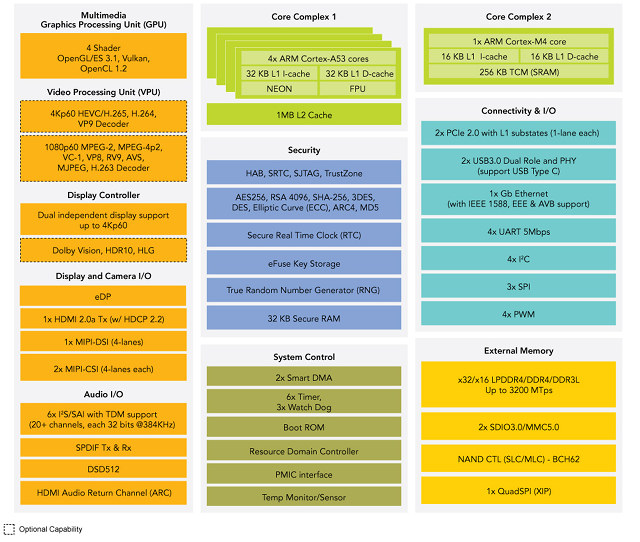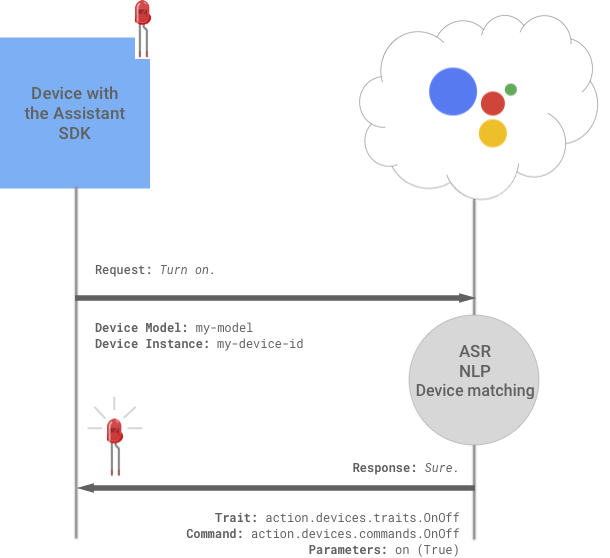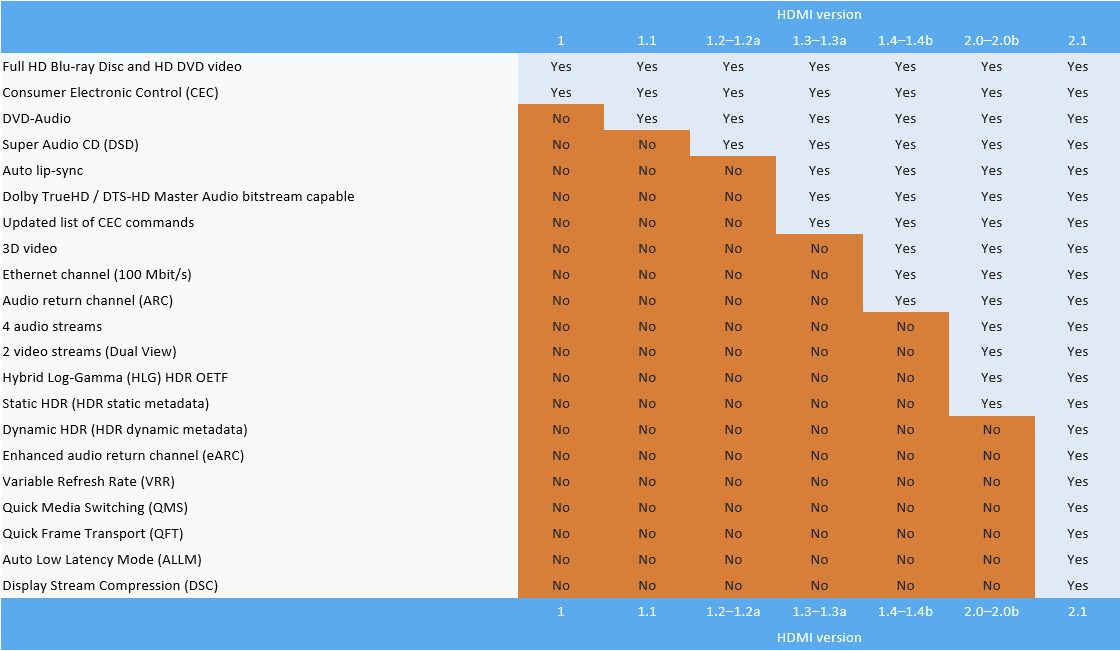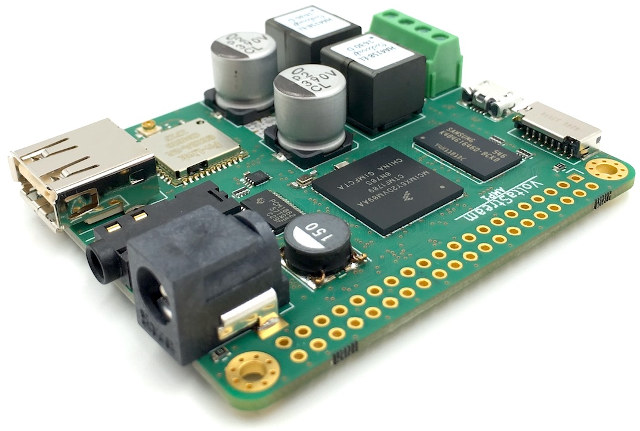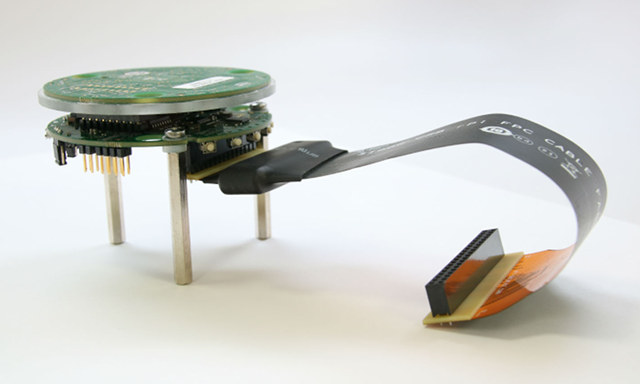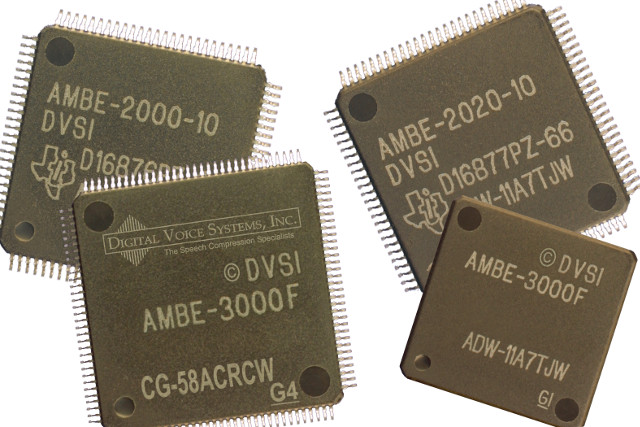We first heard about NXP i.MX 8M processsors in October 2016, and at the end of last year, WandPi 8M development board was unveiled with shipping scheduled for Q2 2018 once the processor will start manufacturing. Other exciting i.MX 8M projects include Purism Librem 5 smartphone, MNT Reform DIY modular computer, and I’m sure there will be others development board & products, and plenty of system-on-modules introduced with the processor in 2018. NXP i.MX 8M processor also got in the news at CES 2018, because it will be one of the hardware platforms certified for Android Things, and NXP also issued a press release to announced the processor’s multimedia capability with be used in voice controlled devices with or without video. The PR refers to Gartner Research saying that “voice commands will dominate 50 percent of all searches in the next two years”, and explains that with thinner and thinner […]
Samsung 8K QLED TV Uses Artificial Intelligence to Upscale SD Content to 8K Resolution
You’ve probably read how artificial intelligence can be applying to modify photos, either repair them, or change the weather in photos from sunny to rainy, and vice versa. Samsung unveiled an 85″ 8K QLED TV right before CES 2018, which should be news by itself, but that I found really intriguing is the TV’s artificial intelligence capabilities that will upscale standard and other resolution content to 8K resolution. The TV will take SD, Full HD or 4K sources runs it through machine learning algorithm to re-create details, reduce noise, and restore edges to bring them back to 8K picture quality. Not your usual “dumb” upscaling 🙂 The TV is said to be equipped with a database that studies and analyzes millions of images in advance to transform low-resolution content into high-resolution, and capable of selecting the optimal filter to convert the source to higher quality. Samsung then explains the images […]
Google Assistant SDK Now Supports Device Actions, More Languages (French, German, Japanese)
Back in May 2017, Google released the Assistant SDK that worked on Raspberry Pi 3, and other ARM boards, essentially transforming low cost development boards into Google Home equivalent. The SDK became more popular once Google’s AIY Voice Kit was launched since it offered an easy and inexpensive way to use it with Raspberry Pi 3 board. Since all you need was a Linux board with an Internet connection, a microphone, and speaker, I tried Google Assistant SDK on one of the cheapest platform available: Orange Pi Zero Set 6 Kit including Orange Pi Zero board, but also an expansion board with built-in microphone and audio output jack, and a cute little case. I added my own pair of speakers, micro SD card, and USB power supply, and after setting up the software, I was able ask question, and get answers with female voice using the demo app. At the […]
HDMI 2.1 Features Overview
HDMI 2.1 was announced last January with support for up to 10K @ 120 Hz while using Display Stream Compression (DSC) and new 48Gbps cables, as well as other improvements. The HDMI Forum has now released version 2.1 of the HDMI specifications. The detailed specifications are only available to HDMI adopters, but an overview of the specifications can be downloaded by simple mortals. From the table above, we can see HDMI 2.1 adds 7 new features compared to HDMI 2.0b: Dynamic HDR (HDR dynamic metadata) – HDR data (depth, detail, brightness, contrast, and color gamuts) can now be optimized on a scene-by-scene or even a frame-by-frame basis Enhanced audio return channel (eARC) – eARC supports high-bitrate home theater audio formats, object-based audio, uncompressed 5.1 and 7.1, and 32-channel uncompressed audio thanks to up to 37 Mbps audio bandwidth. Variable Refresh Rate (VRR) – Syncs up source and display with continually […]
VoltaStream AMP1 Linux Audio Board Includes a Stereo Audio Amplifier, Adds WiFi and Bluetooth
Last summer I wrote about VoltaStream ZERO an audio board powered by NXP i.MX6ULL processor, with up to 1GB RAM, a Texas Instruments DAC, and leveraging Raspberry Pi Zero form factor. The board runs a custom Linux distribution called PolyOS built with the Yocto Project, and including shairport-sync, librespot, SqueezeLite, a DLNA renderer, and more. Polyvection, the company behind the project is now back with VoltaStream AMP1 audio development board, with half the board very similar to VoltStream ZERO, and the other half featuring an audio amplifier, and a wireless module for WiFi and Bluetooth. VoltaStream AMP1 board specifications: SoC – NXP i.MX6ULL ARM Cortex-A7 processor @ 996 MHz System Memory – 512 MB DDR3 Storage – micro SD card slot Audio 1x I2S for integrated DAC and AMP, 1x I2S for GPIO access, 1x TOSLINK-IN jack Analog DAC – Texas Instruments PCM1862 (SNR 103 dB) Amplifier – ISSI IS31AP2121 […]
Intel Speech Enabling Developer Kit Works with Alexa Voice Service, Raspberry Pi 3 Board
We’ve known Intel has been working on Quark S1000 “Sue Creek” processor for voice recognition for several months. S1000 SoC is based on two Tensilica LX6 with HiFi3 DSP, some speech recognition accelerators, and up to 8x microphones interfaces which allows it to perform speech recognition locally. The solution can also be hooked to an application processor via SPI, I2S and USB (optional) when cloud based voice recognition is needed. Intel has recently introduced their Speech Enabling Developer Kit working with Amazon Alexa Voice Service (AVS) featuring a “dual DSP with inference engine” – which must be Quark S1000 – and an 8-mic array. The kit also includes a 40-pin cable to connect to the Raspberry Pi 3 board. Intel only provided basic specifications for the kit: Intel’s dual DSP with inference engine Intel 8-mic circular array High-performance algorithms for acoustic echo cancellation, noise reduction, beamforming and custom wake word […]
AMBE+2 Vocoder Promises High Voice Quality at Low (2.0 to 9.6 Kbps) Data Rates
Opus 1.2 open source audio codec was release a few months ago with the ability to deliver low power low high-quality audio bitrate for speech with bitrates as low as 12 Kbps. Digital Voice Systems (DVSI) claims to have gone even lower thanks to their AMBE+2 vocoder (Advanced MultiBand Excitation) providing high-quality speech at data rates from 2.0 to 9.6 kilobytes per second. AMBE+2 vocoder is said to outperform the company’s previous generation AMBE+ Vocoder as well as the G.729 and G.726 vocoders, while operating at only 4.0 Kbps. The vocoder is suitable for mobile radio, secure voice, satellite communication, computer telephony, digital voice and storage applications The solution can be integrated into product either using software licensing, or through Vocoder chips, and the company lists the following key benefits: Maintains speech intelligibility and speaker recognition at rates as low as 2.0 kbps Resistant to background noise and channel bit errors […]
Google Adds Home Mini and Home Max to its Google Assistant Family
As we’ve just discussed in our post about Pixel 2 / Pixel 2 smartphones, Google had a hardware day yesterday, where they made announcements about various devices with new smartphones, Pixel Buds earbuds optimized for Google Assistant, Pixelbook chromebook, and so on. Google Home family has also been extended with two new models: Home Mini with a much smaller device and a lower price, as well as Home Max with premium speakers. Google Home Mini Specifications: Speaker – 360 sound with 40mm driver Microphones – “Far-field voice recognition supports hands-free use” Audio formats – HE-AAC, LC-AAC+, MP3, Vorbis, WAV (LPCM), FLAC Connectivity – Dual band 802.11 b/g/n/ac WiFi, Bluetooth USB – 1x micro USB port for power Misc – Play/Pause/Talk button, volume buttons, LEDs, microphone on/off switch Power Supply – 5V/1.8A Dimensions – 98 mm ∅ x 42 mm (h) Weight – 173 grams (device only) Home Mini is compatible with […]


